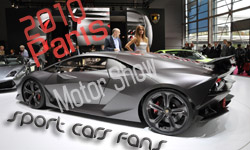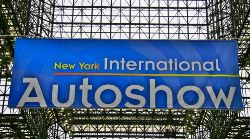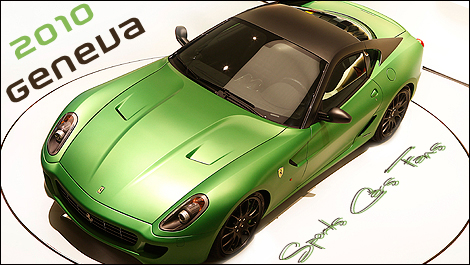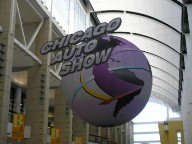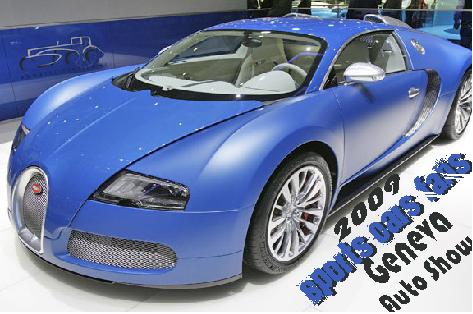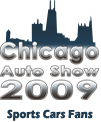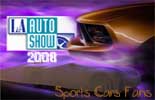First Drive: 2010 Mazda3

Automakers have to walk a thin line when updating a sales success or perennial favorite. It's even worse when the outgoing model embodies both traits. The "evolution not revolution" line gets tossed around the engineering and design centers with the hope the two teams can build off the current model's strengths while simultaneously delivering the upgraded content consumers expect. The 2010 Mazda3 proves it can be done.
With nearly one-third of all Mazdas sold with a 3 appended to the rear, the 2010 model had to continue to meet and exceed expectations in its class, something that's difficult to do when battling it out for compact supremacy among Toyota Corollas and Honda Civics. Thankfully, the features that made the original Mazda3 the leader in its segment – an expressive exterior, well-appointed interior and surprisingly engaging driving dynamics – not only carry over for 2010, but have been improved across the board. After a day of driving, the new 3 wasn't the only one wearing a grin. And oh, what a grin it is.
The new corporate face of Mazda is unexpectedly endearing in person. Pulled from the series of Nagare concepts that have graced show stands over the past three years, the new fascia is slightly overwhelming at first glance, but once you get past the massive five-point grille and start admiring the details, it's far more cohesive than it comes across in photos.
Despite the arresting amount of black plastic, the air inlet feeding the radiator is actually smaller than the outgoing model. Most of the stretched, diamond-shaped detailing is blocked off, further enhancing the new 3's aerodynamic shape that registers in at .29 Cd for the sedan and .31 for the wagon. The intakes flanking the grille are sculpted in such a way that they protrude out of the front bumper in a series of angles and lines that prove incredibly complimentary and tie in with the bulbous front fenders and swept back headlamps. The 3 is unmistakably Mazda, but fans of the Nagare theme may question if this was the best application of the marque's "flow" aesthetic.

The sides of both the sedan and wagon benefit from a subtle crease that begins at the leading edge of the front door, sweeps upwards and widens at the rear. While we've always been fans of the five-door over the standard sedan, the new four-door model is remarkably more attractive than before, losing much of the outgoing model's anonycar profile for something that's both aggressive and subdued.
More surprisingly, it's hard to pick a favorite rump between the hatch and the sedan. Both are completely reworked, with the four-door benefiting from a strong character line surrounding the trunk and a small lip spoiler that perfectly accentuates the organic creases. The hatch also undergoes an overhaul, but the design is much closer to the first generation model, save the stretched pentagon-shaped window inspired by the new fascia and a tweaked spoiler that bleeds off the roof. Both body styles feature distinctly different tail-lamps, each angular and each bulging off the fenders. They're incredibly attractive, although the clear housings are a nod to the '90s that disrupts an otherwise 21st century design.

Mazda isn't immune from the trend of making vehicles larger and safer – and thus, heavier – but with the strategic use of high-tensile steel, bending rigidity is up by 7% and torsional rigidity is the same as the outgoing model, helping the body-in-white drop some 24 pounds. However, when applying the new trim levels and optional equipment, the overall weight is increased by between 50 and 100 pounds. It's a nominal gain in this day and age, but still means the 2010 model can exceed 3,000 pounds depending on spec.
Although the wheelbase of the new 3 still spans 103.9 inches, the front and rear overhangs have increased the overall length to 180.9 inches. The larger fuel tank and redesigned exhaust suck up any additional space inside, but when an interior is this good, both driver and passengers alike aren't worried about a few fractions of an inch here and there.
Inside, it's clear Mazda's "Zoom-Zoom" ethic doesn't stop with an exceptional chassis and competent drivetrains. The interior is focused on the driver, with all the primary controls within easy reach and in many cases, canted inward ala old-school BMWs. The instrument panel is comprised of an oversized speedometer and tach, with a digital fuel gauge and trip computer nestled in between. Disturbingly, there's no coolant temperature gauge, something we hope is rectified when the Mazdaspeed3 goes on sale later this year.

To the right of the driver are two displays: a multi-information screen showing fuel metrics, stereo settings and other useful tidbits (or houses the optional navigation system), with a smaller LCD to the right that displays the climate control and shows basic audio information. Both displays are clear and uncluttered, although the tiny screen makes the navigation system seem like an afterthought and the software's ease-of-use is hit-and-miss. More problematic: the controls for the GPS are only accessible by steering wheel-mounted switchgear, so passengers who want to select a destination are left twiddling their thumbs while the driver navigates through the menu substructure.

The list of options on our maxed-out S Grand Touring tester reads like a late-model Mercedes-Benz, and includes automatic, self-leveling bi-xenon headlamps; push-button start; dual-zone climate control; rain-sensing wipers; heated mirrors and seats; leather; an eight-way adjustable driver's seat with three-position memory; a Bose 10-speaker audio system with iPod and Bluetooth connectivity; Sirius satellite radio; and stability and traction control. In short, there's more kit available than the outgoing 3 and it comes in $240 less than a comparably equipped 2009 model. Looking to downsize, but still want a modicum of luxury? The Mazda3 has you covered. And fuel-economy and power is up to boot.

Two engines are available for 2010: the "i" model's 2.0-liter inline-four putting out 148 hp and 135 lb-ft of torque, or the all-new 2.5-liter MZR four-cylinder (which replaces the 2.3-liter mill). The latter puts out 167 hp and 168 lb-ft of torque in "s" trim. Coupled with either a five-speed auto 'box or a welcomed six-speed manual, the "s" with the manual gearbox is rated at 21 mpg city and 29 mpg highway, while the "i" variant comes in at 25 city and 33 highway.
Out on the road, everything we loved about the original 3 is present in spades. The steering is more communicative than some sports cars we've sampled, transmitting information directly from the road to your palms, yet the system avoids any sensation of on-edge skittishness. The brakes are both progressive and powerful, and after repeated threshold stops and ABS activations, they never faded and continued to offer a predictable pedal feel.

While the new 2.5-liter doesn't offer a particularly sexy or refined engine note, power delivery is linear and more than adequate for both runs around town and the occasional back-road excursion. The six-speed manual is exactly what we'd expect in a modern-day Mazda – smooth, precise and rewarding to row – while the learning curve for clutch take-up is as shallow as a middle-school cheerleader.

But more than anything, it's how all these pieces play together with the chassis and the 205/50 R17 rubber (on "s" models) that continues to amaze and inspire. Unlike its closest competitors, you get the sense Mazda's engineers put the driving experience at the top of their task list, but not at the expense of ride and comfort. The chassis soaks up road imperfections with aplomb, and only the most maniacal mid-corner corrections on less-than-perfect surfaces upset the 3's composure. When pushed, the Mazda3 shoves, transitioning from class-leading levels of grip to progressive understeer that's easily controlled with a slight lift of the throttle or a left-foot dab of the brake.

Although the tweaks to the 3's chassis are minimal – an additional mount for the steering rack (from two to three), the aforementioned structural enhancements and front and rear anti-rollbars positioned further outward – it all adds up to deliver a crisp, polished package that stands in stark contrast to the dynamically numb competition that often charge more and deliver less.
Both the Mazda3 four-door and five-door are available for almost every budget, ranging from the entry-level "i" sv sedan with a five-speed manual starting at $15,045, to the range-topping, automatic-equipped "s" wagon GrandTouring at $22,300. With a plethora of options that could keep even the most jaded luxury refugee pleased and a chassis that delivers almost all the dynamic thrills of a focused sports sedan, the 2010 Mazda3 is easily the final word on engaging transportation on a budget. And above all else, that's something to smile about.
[Source: Autoblog]
